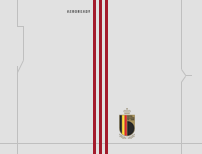Use StartupBlink to browse an interactive map of 6 coworking spaces in Poland and filter them by ranking. View the global coworking map and see which cities and countries have most coworking spaces. Coworking owner? Add your coworking space to the map as well. Updated Back to School Kit + New EDU Webinar Series Introduction This month, the Microsoft Education Customer Engagement and Support Team is releasing an updated version of the well-received Back To School Kit that was initially released in July 2020. The flag of Poland (Polish: flaga Polski) consists of two horizontal stripes of equal width, the upper one white and the lower one red.The two colours are defined in the Polish constitution as the national colours.A variant of the flag with the national coat of arms in the middle of the white stripe is legally reserved for official use abroad and at sea.
- Poland 2020 Kitsempty Spaces The Blog 2017
- Poland 2020 Kitsempty Spaces The Blog Youtube
- Poland 2020 Kitsempty Spaces The Blog Free
The rebirth of Poland
With the outbreak of World War I, two major political trends emerged among the Poles. Józef Piłsudski, distancing himself from socialist politics, became a military leader and commander of a brigade that fought on the Austrian side. His cooperation with the Central Powers was tactical, part of his pursuit of the goal of complete independence. Expecting a collapse of the three partitioners, he prepared for a Polish fait accompli. In 1915 the Germans and the Austrians drove out the Russians from Congress Poland, and on November 5, 1916, they issued the Two Emperors’ Manifesto proclaiming the creation of the Polish kingdom. Its status and borders remained undefined, but the document internationalized the Polish question. Piłsudski, who refused to raise Polish troops without binding political commitments from the Central Powers, came into conflict with them and in 1917 was imprisoned in Magdeburg, Germany.
Roman Dmowski’salternative policy of linking the Polish cause with the Franco-Russian alliance appeared promising when the first formal offer of Polish autonomy and unification came from the Russian commander in chief, Grand Duke Nicholas, on August 14, 1914. Subsequent moves by the Russian government, however, revealed the hollowness of such promises. Russian concessions to the Poles, culminating in the tsar’s Christmas Day 1916 order, were made only in reaction to the Central Powers’ initiatives and victories.

The chances of Polish independence increased radically in 1917 when the United States entered the war and two revolutions shook Russia. U.S. President Woodrow Wilson, to whom the great Polish patriot and pianist Ignacy Paderewski had gained access through Colonel Edward M. House, already spoke of a united and autonomous Poland in a January 1917 address. The Russian Provisional Government, somewhat ambiguously, and the Petrograd (St. Petersburg) Soviet of Workers’ and Soldiers’ Deputies, more explicitly, declared their recognition of Poland’s right to independence in March 1917.

At the Brest-Litovsk conference (December 22, 1917–March 3, 1918), the Bolsheviks denounced the Central Powers’ handling of the Polish question. On January 8, 1918, Wilson’s Fourteen Points appeared. Point 13 declared that an independent Polish state should be erected, to be composed of indisputably Polish inhabitants and with a secure access to the sea. The Inter-Allied conference (June 1918) endorsed Polish independence, thus crowning the efforts of Dmowski, who had promoted the Polish cause in the West since 1915. In August 1917 he had set up a Polish National Committee in Paris, which the French viewed as a quasi-government. Under its aegis a Polish army composed mainly of volunteers from the United States was placed under the command of General Józef Haller.
With the end of the war on November 11, 1918, Piłsudski, released by the German revolutionaries, returned to Warsaw. The German-appointed Regency Council handed over its powers to him, and Piłsudski successfully negotiated a German evacuation of the kingdom. A leftist government in Lublin headed by Daszyński resigned in his favour, but Dmowski’s Polish National Committee, representing the Polish political right, did not. The danger of two rival governments was avoided through the mediation of Paderewski. Under a compromise implemented in January 1919, Piłsudski remained chief of state and commander in chief; Paderewski, who became premier and foreign minister, and Dmowski represented Poland at the Paris Peace Conference. Backtrack software download.
At that stage the Polish government controlled only Congress Poland and western Galicia. In the east the Ukrainians, having proclaimed their own republic, battled the Poles. Farther east the Poles clashed with the Bolsheviks, who were advancing into Belarusian and Lithuanian lands. A Polish uprising in Poznania led to a partial seizure of the province, but the fate of Prussian Poland lay in the hands of the peacemakers, who had also the last word about the territorial settlement.
- Land
- Relief
- Plant and animal life
- People
- Settlement patterns
- Economy
- Resources and power
- Transportation and telecommunications
- Government and society
- Security
- Cultural life
- The arts
- History
- The Piast monarchy
- The period of divisions
- Revival of the kingdom
- The states of the Jagiellonians
- The waning of the Middle Ages
- The golden age of the Sigismunds
- The Commonwealth
- Báthory and the Vasas
- The 17th-century crisis
- The Saxons
- Reforms, agony, and partitions
- Partitioned Poland
- From the Congress of Vienna to 1848
- Poland in the 20th century
- The Piast monarchy
Our editors will review what you’ve submitted and determine whether to revise the article.
 Join Britannica's Publishing Partner Program and our community of experts to gain a global audience for your work!
Join Britannica's Publishing Partner Program and our community of experts to gain a global audience for your work! Poland, country of central Europe. Poland is located at a geographic crossroads that links the forested lands of northwestern Europe to the sea lanes of the Atlantic Ocean and the fertile plains of the Eurasian frontier. Now bounded by seven nations, Poland has waxed and waned over the centuries, buffeted by the forces of regional history. In the early Middle Ages, Poland’s small principalities and townships were subjugated by successive waves of invaders, from Germans and Balts to Mongols. In the mid-1500s, united Poland was the largest state in Europe and perhaps the continent’s most powerful nation. Yet two and a half centuries later, during the Partitions of Poland (1772–1918), it disappeared, parceled out among the contending empires of Russia, Prussia, and Austria.


Even at a time of national crisis, however, Polish culture remained strong; indeed, it even flourished, if sometimes far from home. Polish revolutionary ideals, carried by such distinguished patriots as Kazimierz Pułaski and Tadeusz Kościuszko, informed those of the American Revolution. The Polish constitution of 1791, the oldest in Europe, in turn incorporated ideals of the American and French revolutions. Poles later settled in great numbers in the United States, Canada, Argentina, and Australia and carried their culture with them. At the same time, Polish artists of the Romantic period, such as pianist Frédéric Chopin and poet Adam Mickiewicz, were leading lights on the European continent in the 19th century. Following their example, Polish intellectuals, musicians, filmmakers, and writers continue to enrich the world’s arts and letters.
Restored as a nation in 1918 but ravaged by two world wars, Poland suffered tremendously throughout the course of the 20th century. World War II was particularly damaging, as Poland’s historically strong Jewish population was almost wholly annihilated in the Holocaust. Millions of non-Jewish Poles also died, victims of more partition and conquest. With the fall of the Third Reich, Poland effectively lost its independence once again, becoming a communist satellite state of the Soviet Union. Nearly a half century of totalitarian rule followed, though not without strong challenges on the part of Poland’s workers, who, supported by a dissident Catholic Church, called the economic failures of the Soviet system into question.
In the late 1970s, beginning in the shipyards of Gdańsk, those workers formed a nationwide movement called Solidarity (Solidarność). Despite the arrest of Solidarity’s leadership, its newspapers kept publishing, spreading its values and agenda throughout the country. In May 1989 the Polish government fell, along with communist regimes throughout eastern Europe, beginning Poland’s rapid transformation into a democracy.
That transformation has not been without its difficulties, as the Nobel Prize-winning poet Wisława Szymborska wrote a decade later:
I came to the paradoxical conclusion that some workers had it much easier in the Polish People’s Republic. They didn’t have to pretend. They didn’t have to be polite if they didn’t feel like it. They didn’t have to suppress their exhaustion, boredom, irritation. They didn’t have to conceal their lack of interest in other people’s problems. They didn’t have to pretend that their back wasn’t killing them when their back was in fact killing them. If they worked in a store, they didn’t have to try to get their customers to buy things, since the products always vanished before the lines did.
By the turn of the 21st century, Poland was a market-based democracy, abundant in products of all kinds and a member of both NATO (North Atlantic Treaty Organization) and the European Union (EU), allied more strongly with western Europe than with eastern Europe but, as always, squarely between them.
A land of striking beauty, Poland is punctuated by great forests and rivers, broad plains, and tall mountains. Warsaw (Warszawa), the country’s capital, combines modern buildings with historic architecture, most of which was heavily damaged during World War II but has since been faithfully restored in one of the most thoroughgoing reconstruction efforts in European history. Other cities of historic and cultural interest include Poznań, the seat of Poland’s first bishopric; Gdańsk, one of the most active ports on the busy Baltic Sea; and Kraków, a historic centre of arts and education and the home of Pope John Paul II, who personified for the Polish their country’s struggle for independence and peace in modern times.
Poland 2020 Kitsempty Spaces The Blog 2017
Poland 2020 Kitsempty Spaces The Blog Youtube
- Official name
- Rzeczpospolita Polska (Republic of Poland)
- Form of government
- unitary multiparty republic with two legislative houses (Senate [100]; Sejm [460])
- Head of state
- President: Andrzej Duda
- Head of government
- Prime Minister: Mateusz Morawiecki
- Capital
- Warsaw
- Official language
- Polish
- Official religion
- none1
- Monetary unit
- złoty (zł)
- Currency Exchange Rate
- 1 USD equals 3.736 Polish zloty
- Population
- (2020 est.) 38,375,000
- Population rank
- (2019) 36
- Population projection 2030
- 37,663,000
- Total area (sq mi)
- 120,726
- Total area (sq km)
- 312,679
- Density: persons per sq mi
- (2018) 318.4
- Density: persons per sq km
- (2018) 122.9
- Urban-rural population
- Urban: (2018) 60.1%
- Rural: (2018) 39.9%
- Life expectancy at birth
- Male: (2017) 74 years
- Female: (2017) 81.8 years
- Literacy: percentage of population age 15 and over literate
- Male: not available
- Female: not available
- GNI (U.S.$ ’000,000)
- (2017) 482,526
- GNI per capita (U.S.$)
- (2017) 12,710
Poland 2020 Kitsempty Spaces The Blog Free
- 1Roman Catholicism has special recognition per 1997 concordat with Vatican City.
- On September 1, 1939, Poland was invaded by Germany despite never having made a declaration of war, igniting World War II. It remained the only European country to neither cooperate with nor surrender a battle to the Nazis.
- Poland's flag is divided between two equally sized horizontal strips, with white on top and red on bottom. Its flag is thus extremely similar to those of Monaco and Indonesia, which are in the reverse orientation, and that of Singapore, which is in the reverse orientation but with a crescent and stars in the top half.
- There has only ever been one Polish pope. Pope John Paul II, born Karol Józef WojtyBa, was born in Wadowice, Poland and served as pope from October 16, 1978 until his death on April 2, 2005.
- Poland is the first European country and second country overall to have written a constitution, although the constitution has changed (as recently as 1997).
- Poland is located in the exact geographical center of the European continent.
